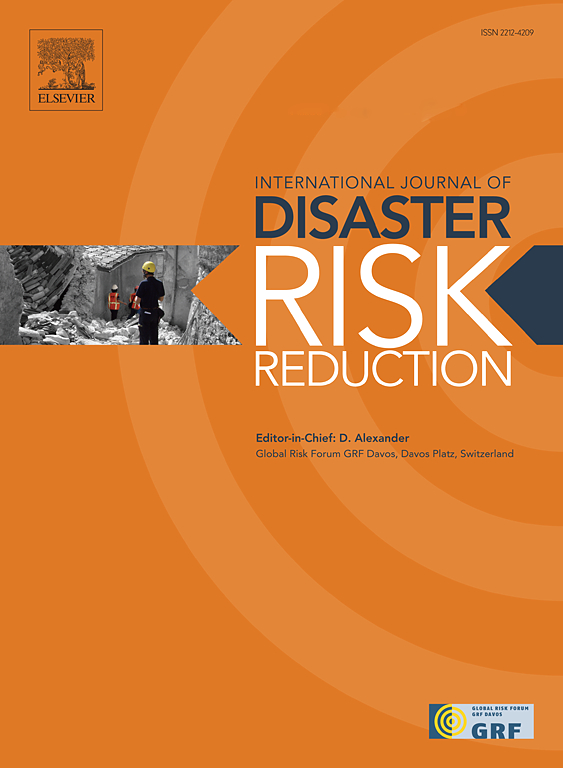A spatiotemporal casualty assessment method caused by earthquake falling debris of building clusters considering human emergency behaviors
IF 4.2
1区 地球科学
Q1 GEOSCIENCES, MULTIDISCIPLINARY
International journal of disaster risk reduction
Pub Date : 2025-02-01
DOI:10.1016/j.ijdrr.2025.105206
引用次数: 0
Abstract
Earthquake-induced falling debris of building groups often cause severe casualties. To help reducing such casualties, this study proposes a spatiotemporal casualty assessment method of earthquake-induced falling debris, taking into account human emergency behaviors. Firstly, the high-resolution population distribution is established based on location based-service data and Kriging interpolation. Then, based on the videos in real earthquakes, a sparse spatial-aware distance field algorithm at community scale is designed, which can simulate the emergency behavior trend of individuals moving towards open spaces during earthquake. Finally, a spatiotemporal casualty assessment algorithm is designed to calculate the number of casualties caused by falling debris. The proposed method is applied in Shenzhen's central business district, where contain 324 buildings and a population of 140,000 people. The results demonstrate that incorporating emergency behavior significantly reduced casualties, with injuries and fatalities decreasing by 29.6 % and 25 %, respectively. The method proposed in this study can accurately predict the number of casualties in community scale, supporting the decision-making on earthquake emergency plans.
求助全文
约1分钟内获得全文
求助全文
来源期刊

International journal of disaster risk reduction
GEOSCIENCES, MULTIDISCIPLINARYMETEOROLOGY-METEOROLOGY & ATMOSPHERIC SCIENCES
CiteScore
8.70
自引率
18.00%
发文量
688
审稿时长
79 days
期刊介绍:
The International Journal of Disaster Risk Reduction (IJDRR) is the journal for researchers, policymakers and practitioners across diverse disciplines: earth sciences and their implications; environmental sciences; engineering; urban studies; geography; and the social sciences. IJDRR publishes fundamental and applied research, critical reviews, policy papers and case studies with a particular focus on multi-disciplinary research that aims to reduce the impact of natural, technological, social and intentional disasters. IJDRR stimulates exchange of ideas and knowledge transfer on disaster research, mitigation, adaptation, prevention and risk reduction at all geographical scales: local, national and international.
Key topics:-
-multifaceted disaster and cascading disasters
-the development of disaster risk reduction strategies and techniques
-discussion and development of effective warning and educational systems for risk management at all levels
-disasters associated with climate change
-vulnerability analysis and vulnerability trends
-emerging risks
-resilience against disasters.
The journal particularly encourages papers that approach risk from a multi-disciplinary perspective.
 求助内容:
求助内容: 应助结果提醒方式:
应助结果提醒方式:


